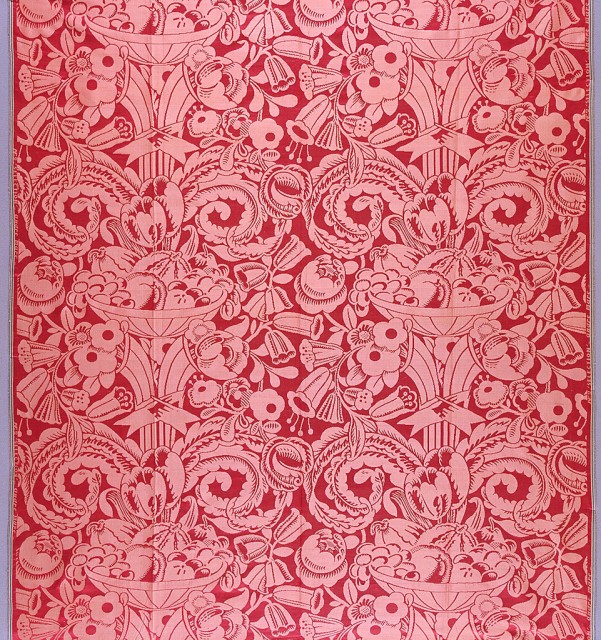In design history as in art history, works are often organized into distinct chronological styles or movements. Such a rigid framework tends to neglect a certain natural fluidity inherent in the evolution of style. For example, 1920s French designs cannot always be simply defined by such broad strokes as Art Deco, Moderne, or Cubism. Many examples from the era notoriously blur those lines, like this woven silk from 1925. This design is the product of a successful dialogue among multiple influences. The layout and subject matter, fruit, flowers, cornucopias and leaves are quite traditional, indicative of a trend to historic revival. The simplified, flattened look of those lushly saturated motifs coupled with a restrained colorway, can be characterized as Art Deco.
André Mare designed this fabric while working at La Compagnie des Arts Français, which he co-founded with Louis Süe. Both men were trained as painters, but were also well known for their furniture and textile designs. The multi-disciplinary decorating firm was made up of specialized designers but they also commissioned work from independent artists. These types of companies, known as artistes décorateurs, of which La Compagnie des Arts Français was the most famous, were known for producing this type of eclectic design largely due to the independent nature of its employees. The formal language and cohesiveness of a completed interior were always an important consideration in the designs produced by artistes décorateurs, but the freer method of collaboration that they used showed a marked transition away from the strictness of the German Gesamtkunstwerk.
Carly Lewis is currently earning an M.A. in the History of Decorative Arts and Design at Parsons. She has a B.S. in Textile Design from Philadelphia University and is focusing her studies on gender issues in regard to textile design practices in the 20th century.
